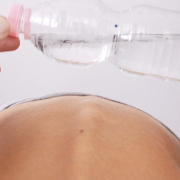Does curve pattern impact on the effects of physiotherapeutic scoliosis specific exercises on Cobb angles of participants with adolescent idiopathic scoliosis: A prospective clinical trial with two years follow-up
Every year, the Italian Scoliosis Study Group selects the best published papers on conservative spine treatment from the global scientific literature.
Here is the abstract from one of these papers.
Does curve pattern impact on the effects of physiotherapeutic scoliosis specific exercises on Cobb angles of participants with adolescent idiopathic scoliosis: A prospective clinical trial with two years follow-upnders stage 7b: Using the appearance of the ulnar physis improves decision-making for brace weaning in patients with adolescent idiopathic scoliosis
Yunli Fan, Michael K T To, Eric H K Yeung, Jianbin Wu, Rong He, Zhuoman Xu, Ruiwen Zhang, Guangshuo Li,
Kenneth M C Cheung, Jason P Y Cheung
PMID: 33493172 PMCID: PMC7833215 DOI: 10.1371/journal.pone.0245829
Abstract
Background: Current clinical evidence suggests that a well-planned physiotherapeutic scoliosis specific exercise (PSSE) program is effective for scoliosis regression.
Objectives: We investigated the effect of curve patterns on Cobb angles with PSSE.
Methods: This was a non-randomized prospective clinical trial that recruited participants with adolescent idiopathic scoliosis between January and June 2017. Participants were grouped by curve pattern into major thoracic and major lumbar groups. An outpatient-based PSSE program was conducted with the following schedule of intensive exercise: ≥ 1 session of supervised PSSE per month and > 30min of home exercise 5 days/week in the first 6 months, after which exercise frequency was reduced to 1 session of supervised PSSE every three months and > 30min of home exercise 5 days/week until 2 years after study initiation. Radiographic Cobb angle progressions were identified at the 1, 1.5 and 2-year follow-ups. A mixed model analysis of variance (ANOVA) was performed to examine the differences in Cobb angles between groups at four testing time points. The two-tailed significance level was set to 0.05.
Results: In total, 40 participants were recruited, including 22 with major thoracic curves (5 males and 17 females; mean age 13.5±1.8 years; Cobb angle 18-45 degrees) and 18 with major lumbar curves (7 males and 11 females; mean age 12.7±1.7 years; Cobb angle 15-48 degrees). Curve regressions, namely the reduction of Cobb angles between 7 to 10 degrees were noted in 9.1% of participants in the major thoracic group; reductions of 6 to 13 degrees were noted in 33.3% of participants in the major lumbar group at the 2-year follow-up. Repeated measurements revealed a significant time effect (F2.2,79.8 = 4.1, p = 0.02), but no group (F2.2,79.8 = 2.3, p = 0.1) or time × group (F1,37 = 0.97, p = 0.3) effects in reducing Cobb angles after 2 years of PSSE. A logistic regression analysis revealed that no correlation was observed between curve pattern and curve regression or stabilization (OR: 0.2, 95% CI: 0.31-1.1, p = 0.068) at the 2-year follow-up.
Conclusion: This was the first study to investigate the long-term effects of PSSE in reducing Cobb angles on the basis of major curve location. No significant differences in correction were observed between major thoracic and major lumbar curves. A regression effect and no curve deterioration were noted in both groups at the 2-year follow-up.
Trial registration: ChiCTR1900028073.




Leave a Reply
Want to join the discussion?Feel free to contribute!